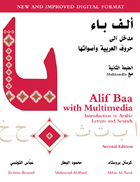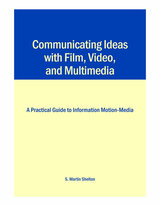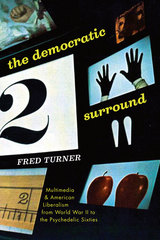
NEW AND IMPROVED DIGITAL FORMAT!
Since the release of the second edition of Alif Baa with DVDs in the fall of 2004, thousands of Arabic language learners have benefited from the integrated textbook and DVDs. This new version—Alif Baa with Multimedia—functions even better and features a new and improved digital format.
The content of Alif Baa with Multimedia, Second Edition, including the text and all of the audio and video on the disk, is exactly the same as that of Alif Baa with DVDs, Second Edition. Only the format of the disk has changed so that all files will be easy to play using the free Adobe Flash Player. All units are now included on only one disk. Teachers and students may use both versions of the textbook side-by-side in the classroom and notice no difference in content or appearance. It should not affect the learning experience or require teachers to do any additional preparation.
FEATURES• Introduces about 150 basic vocabulary words, including conventional forms of politeness and social greetings• Introduces a range of Arabic from colloquial to standard in authentic contexts• Includes video footage of an Arabic calligrapher, capsules on Arabic culture, and images of street signs from Morocco, Egypt, and Lebanon• Provides the essential first 20-25 contact hours of the Al-Kitaab program
The DVD that accompanies Alif Baa with Multimedia plays in any computer’s DVD drive. In order to view the files, you will need to download and install the free Flash Player from Adobe’s website.
System Requirements:
Windows• 450 MHz Intel Pentium II (or compatible) processor• MS Windows 2000, Windows XP, or Windows Vista• 128MB of RAM and 128MB of VRAM• Computer with DVD drive• Headphones or speakers• Flash Player (free download from http://www.adobe.com/products/flashplayer/)
Mac• 500 MHz PowerPC G3 or 1.33 GHz Intel Core Duo processor• Mac OS X v10.4 or 10.5• 128MB of RAM and 128MB of VRAM• Computer with DVD drive• Headphones or speakers• Flash Player (free download from http://www.adobe.com/products/flashplayer/)
Georgetown University Press is not able to provide technical support for the CDs and DVDs that accompany the Al-Kitaab series.

The final and most advanced volume of the Al-Kitaab Arabic textbook program, Part Three is intended to help learners reach a superior level of proficiency by expanding vocabulary and providing paragraph-level activities in reading, writing, and speaking. More than thirty authentic texts by writers from across the Arab world address a range of political, social, religious, and literary themes and represent a range of genres, styles, and periods. Although the book focuses primarily on modern Arabic, classical Arabic texts have been incorporated into some of the lessons to introduce students to the continuity of the language throughout its history.
Like previous books in the series, Part Three presents vocabulary-building drills and contextualized explanations of grammar, with exercises designed to push students toward independent learning.
The original text and audio are now bound together in one volume along with new video material on DVD that continues the story of Maha and Khalid in Egyptian Arabic, making Part Three an invaluable textbook and reader.
Features:• Guides learners to the superior level of proficiency• Strengthens reading skills• Increases vocabulary acquisition• Refines and expands knowledge of sentence structure and the Arabic verb system• Provides extensive writing activities• Widens cultural background• Includes more than thirty authentic texts by writers from across the Arab world• Audio tracks have been remastered as MP3 files, recorded on one CD, and bound into the book• Includes all new video material on DVD that continues the story of Maha and Khalid• New video material continues instruction in the Egyptian dialect

This second edition includes one DVD bound into the book that feature contextualized vocabulary, cultural background and illustrations, and new listening comprehension materials with each lesson. Newly recorded colloquial audio and video materials also accompany each lesson and continue the story of Maha and Khalid and their travels to Cairo with brief explanatory vocabulary and notes provided in the text. The appendices include grammatical reference charts, an Arabic-English glossary, and a grammar index. The materials cover approximately 150 contact hours of instruction, and students who complete Part Two should reach advanced proficiency.
Each lesson in Part Two centers on a text that deals with a social, historical, literary, or cultural issue. In addition to the main reading text, students will also find additional authentic texts for reading and listening comprehension, vocabulary and grammar exercises, close listening and speaking activities, and cultural background for the reading.
The revised and repackaged Part Two has been restructured to reflect pedagogical developments over the last eight years, updated with new authentic reading and listening texts, and expanded with new video materials. In addition to the speaking, listening, and writing skills emphasized throughout each lesson, more time and emphasis is placed on activating vocabulary and structure with new activities for inside and outside the classroom.
FEATURES: • Provides basic texts of printed media to help students connect the written and aural/oral aspects of Arabic • Features intensive reading that is focused on grammar and pronunciation • Contains substantial amounts of drills and exercises to help students memorize and gain active control of an expanded vocabulary • Explores the root and pattern system of Arabic grammar and complex sentence structure using vocabulary, complex texts, and translation exercises • Develops writing skills at the paragraph level to encourage synthesis of vocabulary and grammar • Provides explicit instructions to students and instructors on drills and activities, including recommendations on appropriate exercises for inside and outside the classroom • Interactive DVD contains reading comprehension texts with new material and new listening comprehension material • DVD presents cultural background with illustrations and continues the story of Maha and Khalid using both Egyptian Colloquial Arabic and Modern Standard Arabic

Forgoing discussions of technology, Shelton instead concentrates on the communication principles that can motivate an audience to achieve a particular goal—a goal that must be realistic, worthwhile, and appropriate. His inventive approach coalesces theory of the media with its philosophy, analysis, history, and application, as well as his own informed personal opinions. This valuable guide examines how to effectively encode information in motion-media by using in-depth communication analysis and pertinent filmic design. Throughout, Shelton emphasizes that kinetic visuals, rather than audio, are the defining elements of the best motion-media communication. Organized into five parts that can be used independently or in sequence, the volume frames key topics in the industry that collectively form a cohesive strategy for motion-media design and production. First, Shelton discusses the essence of the medium as a communication tool. In the second part, he addresses the forms and functions of motion-media. The third part details communication analysis and its application. Next, Shelton delves into script design, distribution, and career growth. Lastly, he offers advice on business aspects of the profession. Told from the vantage point of a seasoned expert, Communicating Ideas with Film, Video, and Multimedia is a “how to do it” book as well as a treatise on “why to do it.” Shelton’s narrative is complemented by twenty-six illustrations (including multimedia flowcharts, sample forms, and photographs of some of the great documentary filmmakers), a variety of script formats, and a listing of the all-time best documentary films.

In this prequel to his celebrated book From Counterculture to Cyberculture, Turner rewrites the history of postwar America, showing how in the 1940s and ’50s American liberalism offered a far more radical social vision than we now remember. Turner tracks the influential mid-century entwining of Bauhaus aesthetics with American social science and psychology. From the Museum of Modern Art in New York to the New Bauhaus in Chicago and Black Mountain College in North Carolina, Turner shows how some of the most well-known artists and intellectuals of the forties developed new models of media, new theories of interpersonal and international collaboration, and new visions of an open, tolerant, and democratic self in direct contrast to the repression and conformity associated with the fascist and communist movements. He then shows how their work shaped some of the most significant media events of the Cold War, including Edward Steichen’s Family of Man exhibition, the multimedia performances of John Cage, and, ultimately, the psychedelic Be-Ins of the sixties. Turner demonstrates that by the end of the 1950s this vision of the democratic self and the media built to promote it would actually become part of the mainstream, even shaping American propaganda efforts in Europe.
Overturning common misconceptions of these transformational years, The Democratic Surround shows just how much the artistic and social radicalism of the sixties owed to the liberal ideals of Cold War America, a democratic vision that still underlies our hopes for digital media today.
READERS
Browse our collection.
PUBLISHERS
See BiblioVault's publisher services.
STUDENT SERVICES
Files for college accessibility offices.
UChicago Accessibility Resources
home | accessibility | search | about | contact us
BiblioVault ® 2001 - 2024
The University of Chicago Press









